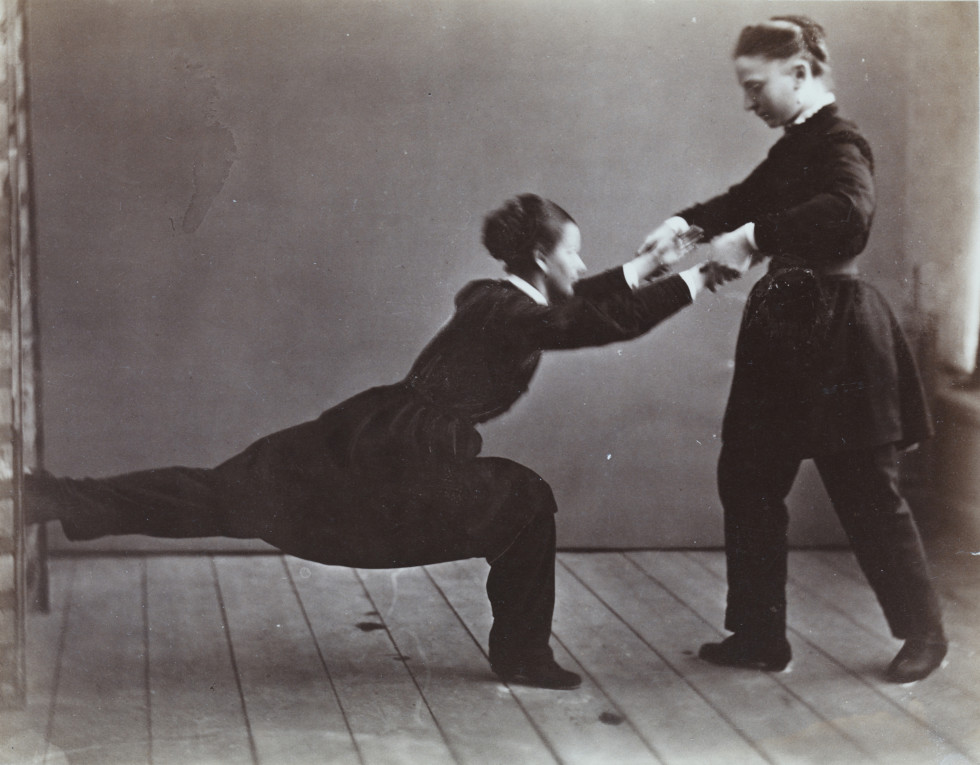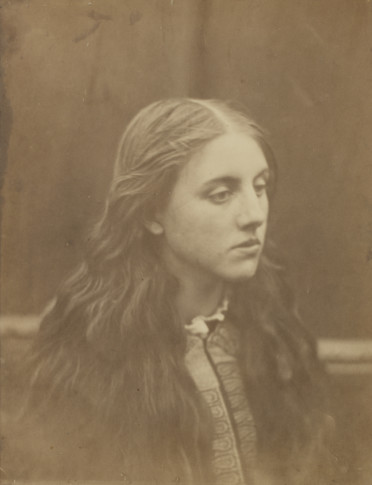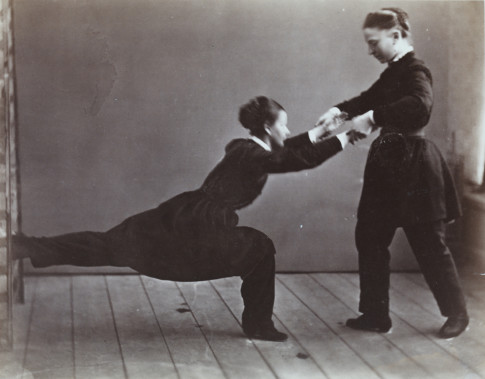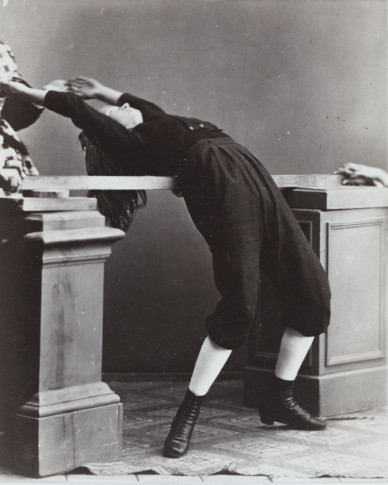
Carl Jacob Malmberg, From the series Gymnastics, ca 1875
Introduction: Written in Light – Early Photography
Ever since it was first invented, photography has continued to develop and is constantly finding new applications and purposes. Today, photography is once more in a transitional period, not least with the breakthrough of digital images and their omnipresence in social media. This gives us all the more reason to reflect on how the history of photography impacts on contemporary photographic culture. The exhibition Written in Light – Early Photography presents a selection of photographers who were active in the second half of the 19th Century. Thanks to the Helmut Gernsheim Duplicate Collection, and the Helmer Bäckström Photohistorical Collection, acquired in the mid-1960s, some of the most prominent and admired photographers are represented at Moderna Museet.
A useful concept when studying early photography and practices is vernacular photography, or la photographie vernaculaire as it is called in French, which means popular, everyday, local, and deals with the culture surrounding photography. Many of these pictures are mounted in beautiful frames and cases, which makes it interesting to study how they were presented and used. Daguerreotype was the first wide breakthrough for photography, with its sharp images that became common for portraits. Around the same time, the method of producing pictures from negatives was invented, the so-called calotype. Two of the main contributors to the development of this technique were Robert Adamson and David Octavius Hill, who worked together in and around Edinburgh in the mid-1840s. All the photographs from this early period can be called “vernacular”, and they demonstrate the various purposes for which the new technique was used.
In Victorian Britain, a small group of photographers were the very first to attempt to create and formulate art photography. Julia Margaret Cameron, who belonged to this group, left behind a fantastic collection of intimate portraits of her family and large circle of friends.
Most image types and photographic techniques are represented in the large collection of Carl Jacob Malmberg. He also exemplifies how the career of a photographer could develop in the early history of the medium from the 1840s to the 1890s. In those early years of the medium, photographer, printer, and retoucher were typically female occupations. One of these prominent woman photographer was Rosalie Sjöman, who took over Malmberg’s studio in Stockholm and ran a successful business.
Landscapes and nature scenes, such as the magnificent scenery of the Yosemite Valley national park, documented in the 1860s by Carleton E. Watkins, were popular and lucrative motifs. Other fascinating photographic portfolios in the Moderna Museet collection are Nils Strindberg’s documentation of Salomon August Andrée’s Arctic Balloon expedition in 1897. The exhibition also shows the Danish artist Joachim Koester’s work Message from Andrée (2005), which borrows its visual material from Strindberg’s documentation of the expedition.
Further reading:
Geoffrey Batchen, Each Wild Idea. Writing Photography History, Cambridge, Massachusetts: The MIT Press, 2001.
Gerard Byrne, Jielemeguvvie guvvie sjisjnjeli – Film inside an Image, University of Warwick, Coventry: Mead Gallery, Melbourne: Monash University Museum of Art, 2016.
Clément Chéroux, Vernaculaires. Essais d’histoire de la photographie, Paris: Le Point du Jour, 2013.
Lena Johannesson and Gunilla Knape (eds), Women Photographers – European Experience, Göteborg: Acta Universitatis Gothoburgensis, 2003.
Anna Tellgren, Another Story. Photography from the Moderna Museet Collection, Moderna Museet: Stockholm, Steidl: Göttingen, 2011.



